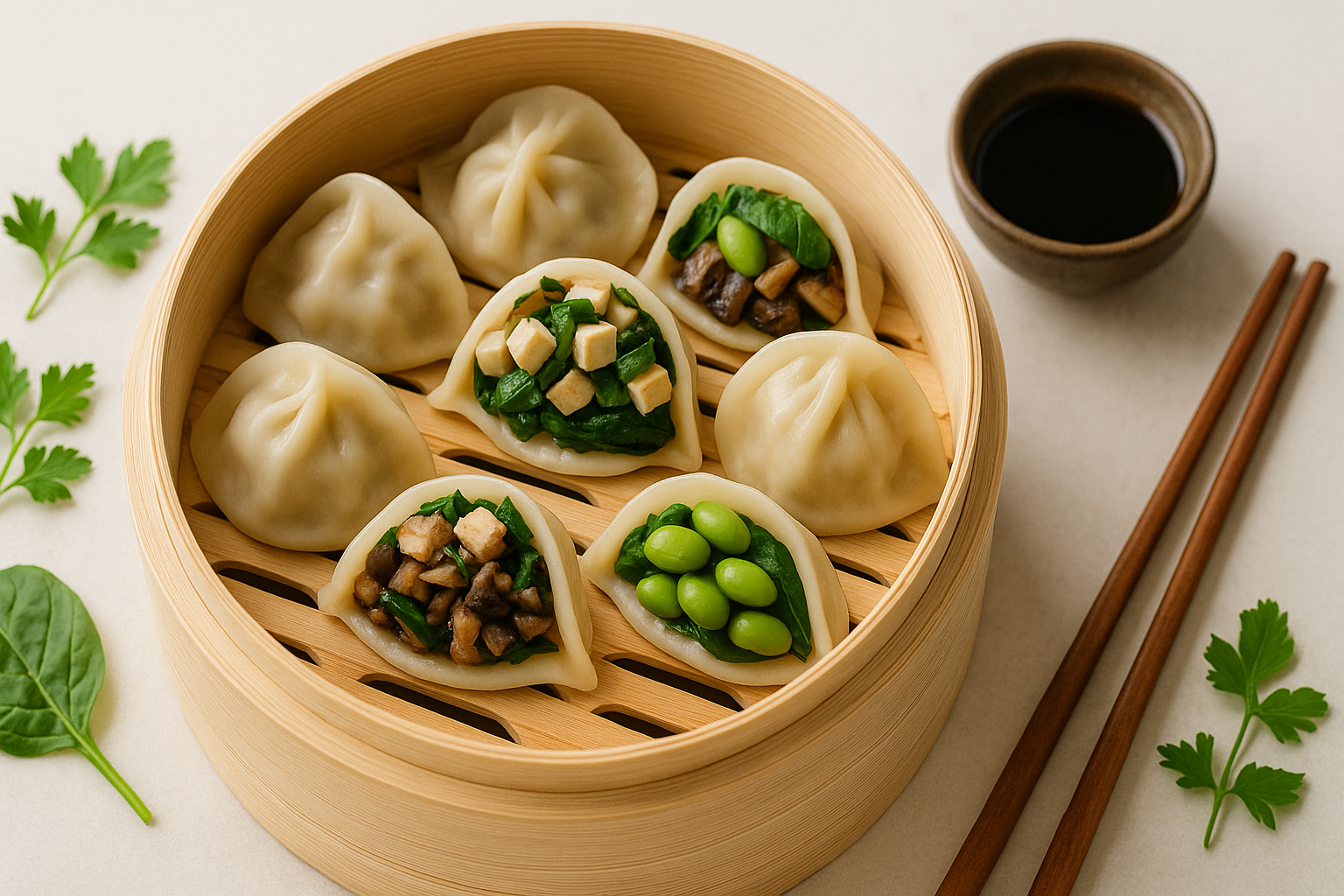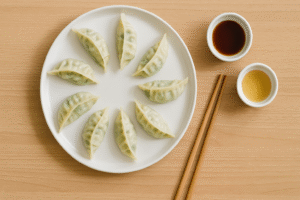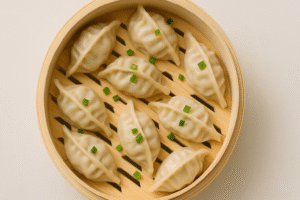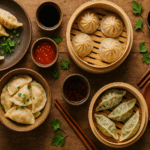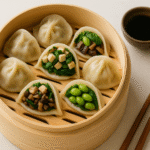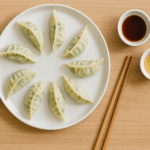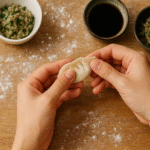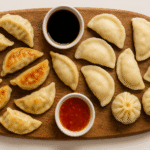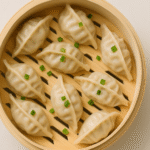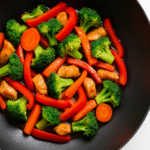The Fold That Changed Everything
It began in a quiet Sydney kitchen.
Steam rose from a pot as Mei, a lifelong dumpling lover, swapped her usual pork filling for tofu, mushrooms, and ginger. The result was soft, aromatic, and surprisingly rich.
As she took her first bite, she smiled. The flavor was all there — warmth, umami, nostalgia — only lighter and cleaner. That moment captured a global shift: food that nourishes both people and planet.
(Also read: The Surprising Health Benefits of Eating Dumplings)
Why the World Is Turning Plant-Based
From Tokyo to Toronto, plant-based dining has left the niche corner of “vegan cafes” and entered home kitchens worldwide.
The reason is simple — people are realizing that small changes can have massive impact.
According to UN Environment, shifting to plant-rich diets can reduce global greenhouse gas emissions by up to 70%.
For dumpling lovers, that’s an easy starting point: take a familiar comfort food and give it a sustainable twist.
(Learn more about the nutrition of traditional and modern dumplings in Are Your Dumplings Good for You? A Complete Health and Nutrition Guide)
The Art of Filling Without the Meat
Every dumpling begins with balance — texture, aroma, and flavor. Going plant-based doesn’t change that; it expands it.
Here are four delicious fillings that prove plants can hold their own:
1. Tofu, Shiitake & Ginger
Soft, earthy, and deeply umami. Perfect for steaming or pan-frying.
2. Spinach, Edamame & Sesame Oil
Fresh, protein-rich, and light — ideal for quick lunches.
3. Sweet Potato, Black Bean & Chili Flakes
Smoky and sweet with a gentle heat. A favorite for newcomers to plant-based cooking.
4. Lentil Curry Dumplings
Comfort meets creativity. Lentils bring body and warmth, while curry spices add depth.
For best results, mix soft and firm textures, and use ingredients that bring both moisture and bite.
(See How to Make Perfect Dumplings for step-by-step folding and sealing techniques.)
From Kitchen Table to Climate Action
Every dumpling tells a story — and now, it can tell a sustainable one.
When you choose plant-based fillings, you lower your carbon footprint, reduce water use, and support biodiversity. Dumplings are naturally efficient meals: small, portion-controlled, and easy to freeze without waste.
Make your kitchen greener by:
- Using local, seasonal vegetables.
- Composting scraps or making stock from trimmings.
- Cooking in batches to save energy.
For more global context, read UN Environment: Sustainable Food Systems.
The Health Bonus of Going Green
Plant-based dumplings aren’t just good for the planet — they’re also lighter on your body.
Compared to meat-filled versions, they’re typically lower in saturated fat and calories but high in fiber, vitamins, and antioxidants.
You can make them even healthier by using:
- Whole-grain or rice wrappers.
- Air-frying or steaming instead of deep-frying.
- Minimal oil and sodium-based sauces.
For a detailed nutritional breakdown, explore Are Your Dumplings Good for You?
Folding the Future
As more people discover plant-based dumplings, it’s clear that sustainability doesn’t mean sacrifice.
It means rediscovering flavor in its purest form — earthy mushrooms, sweet corn, spicy ginger, crisp greens.
And when you gather around the table to fold them, you’re not just making food; you’re shaping the future — bite by bite.
Frequently Asked Questions
They’re typically filled with vegetables, tofu, mushrooms, beans, or lentils — often seasoned with soy, sesame, or chili oil for flavor.
Not necessarily. When seasoned well, plant-based fillings can match or exceed traditional versions in flavor, especially when using mushrooms or soy-based proteins for umami.
Yes. Most dumpling wrappers are naturally vegan unless they contain egg. For a fully plant-based version, check the ingredients or make your own with flour and water.
They’re generally lower in fat and calories and higher in fiber and nutrients. They also avoid the cholesterol found in meat. Learn more in Are Your Dumplings Good for You?
Try soy sauce mixed with rice vinegar, chili oil, or peanut sauce. Fresh herbs like coriander or mint can add brightness.
Add aromatics like garlic, ginger, scallions, or miso. You can also include fermented ingredients like kimchi or sauerkraut for depth.
Yes. Place uncooked dumplings on a tray to freeze, then store in bags. Cook them directly from frozen by steaming or pan-frying.
